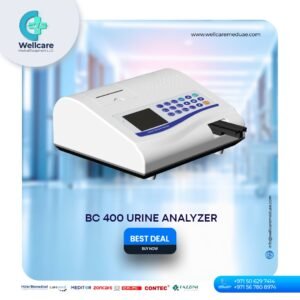cardiology equipment supplier in UAE
Cardiology equipment holds immense significance in the UAE due to its critical role in enhancing healthcare outcomes and addressing the country's rising prevalence of cardiovascular diseases. The UAE's healthcare system has made significant investments in advanced medical technologies, reflecting the country's commitment to providing top-tier medical care. The deployment of advanced cardiology equipment in the UAE facilitates early and accurate diagnosis of heart conditions, ensuring timely intervention and reducing the risk of complications. With devices like ECG machines, echocardiography, and stress test systems, healthcare professionals can effectively identify and monitor heart diseases, improving patient prognosis and survival rates. Treatment and management of cardiovascular diseases are significantly enhanced by the availability of state-of-the-art interventional and surgical equipment. The presence of cardiac catheterization labs, angiography machines, and advanced imaging technologies allows for minimally invasive procedures, reducing recovery times and improving patient outcomes. These facilities are crucial for performing complex procedures like angioplasty, stent placements, and cardiac surgeries, which are essential for managing severe heart conditions. Continuous monitoring of heart patients is made possible through devices such as Holter monitors and implantable loop recorders, which provide comprehensive data on heart activity. This continuous monitoring is vital for detecting irregularities and ensuring that patients receive the necessary medical attention promptly. Moreover, the UAE's focus on integrating modern cardiology equipment into its healthcare infrastructure supports its efforts in medical research and innovation. The data collected from advanced diagnostic and monitoring tools contribute to the understanding of cardiovascular diseases, paving the way for the development of new treatments and therapeutic strategies. Public health initiatives in the UAE benefit significantly from the use of cardiology equipment. These technologies enable widespread screening and monitoring, helping to identify at-risk populations and implement preventive measures. By improving the early detection and management of heart diseases, the UAE can reduce the overall burden of cardiovascular conditions, ultimately enhancing the quality of life for its citizens. In summary, the significance of cardiology equipment in the UAE lies in its ability to provide accurate diagnostics, effective treatment, continuous monitoring, and support for medical research. These advancements contribute to the country's goal of delivering high-quality healthcare and addressing the challenges posed by cardiovascular diseases.
Cardiology equipment is crucial in modern healthcare for several reasons:
Diagnosis and Monitoring
- Accurate Diagnosis: Equipment like ECG machines, echocardiograms, and stress test systems help in the precise diagnosis of heart conditions.
- Continuous Monitoring: Devices such as Holter monitors and implantable loop recorders allow for continuous monitoring of heart activity, essential for detecting irregularities.
- Early Detection: Advanced imaging technologies like CT and MRI scans help in the early detection of cardiovascular diseases, allowing for timely intervention.
Treatment
- Interventional Procedures: Equipment like angiography machines and cardiac catheterization labs are essential for minimally invasive procedures such as angioplasty and stent placement.
- Surgical Support: Devices like heart-lung machines and intra-aortic balloon pumps are vital during cardiac surgeries, ensuring patient safety and improving outcomes.
- Implantable Devices: Pacemakers, defibrillators, and ventricular assist devices are crucial for managing chronic heart conditions and improving the quality of life for patients.
Management and Rehabilitation
- Patient Management: Equipment for monitoring blood pressure, cholesterol levels, and other vital signs helps in managing chronic heart conditions effectively.
Rehabilitation: Cardiac rehabilitation equipment aids in the recovery process post-surgery or after a cardiac event, helping patients regain strength and improve cardiovascular health.
Research and Innovation
- Clinical Research: Advanced cardiology equipment enables detailed research and understanding of cardiovascular diseases, leading to innovative treatments and improved patient care.
- Data Collection: Modern devices collect extensive data that can be used to study patterns, improve diagnostic algorithms, and develop new therapeutic strategies.
Public Health Impact
- Reducing Mortality: Effective use of cardiology equipment reduces the mortality rate associated with heart diseases by enabling early detection, accurate diagnosis, and effective treatment.
- Improving Quality of Life: Proper management of heart conditions through advanced equipment significantly enhances patients’ quality of life and reduces the burden on healthcare systems.
- Healthcare Accessibility: Portable and user-friendly cardiology equipment makes heart care accessible even in remote and underserved areas, bridging the gap in healthcare disparities.
The significance of cardiology equipment is evident in its widespread use in diagnosis, treatment, and management of heart diseases, ultimately leading to better patient outcomes and improved public health.




